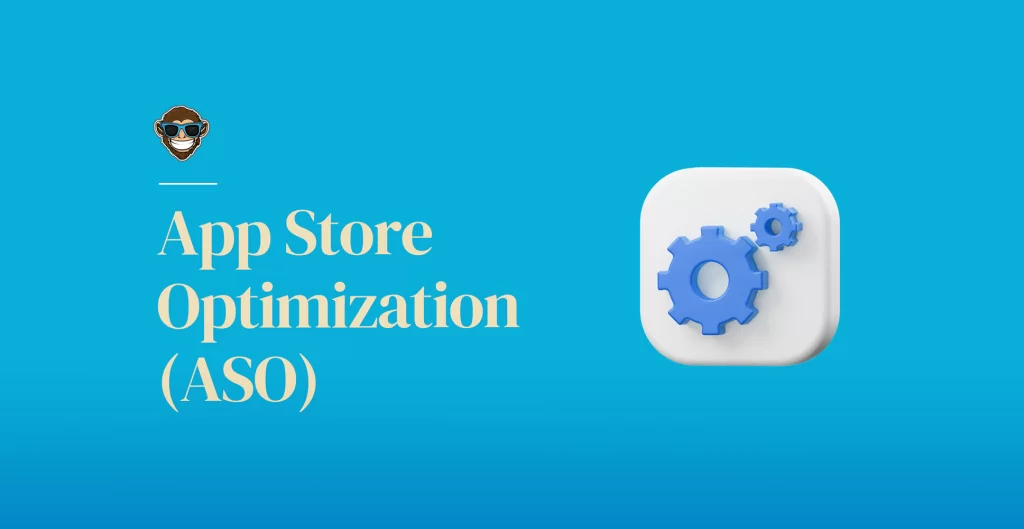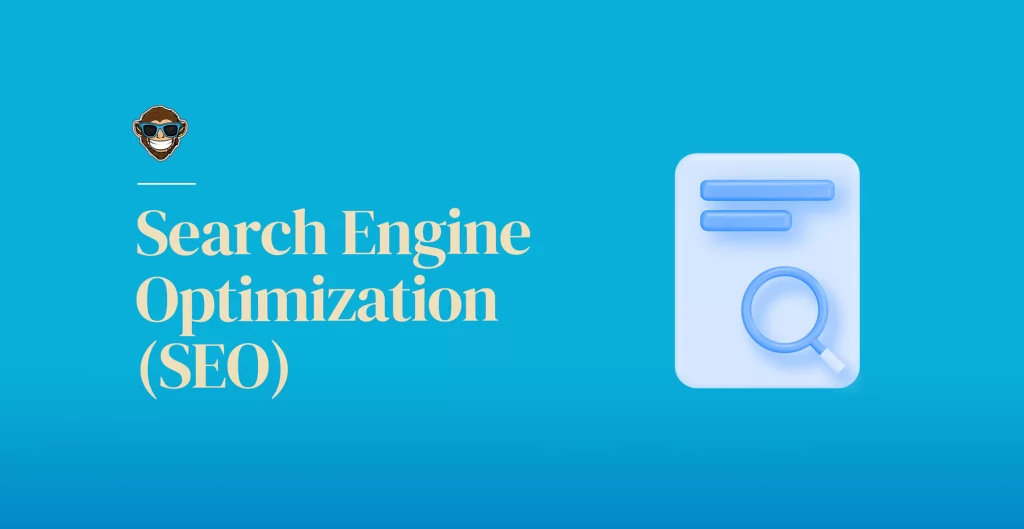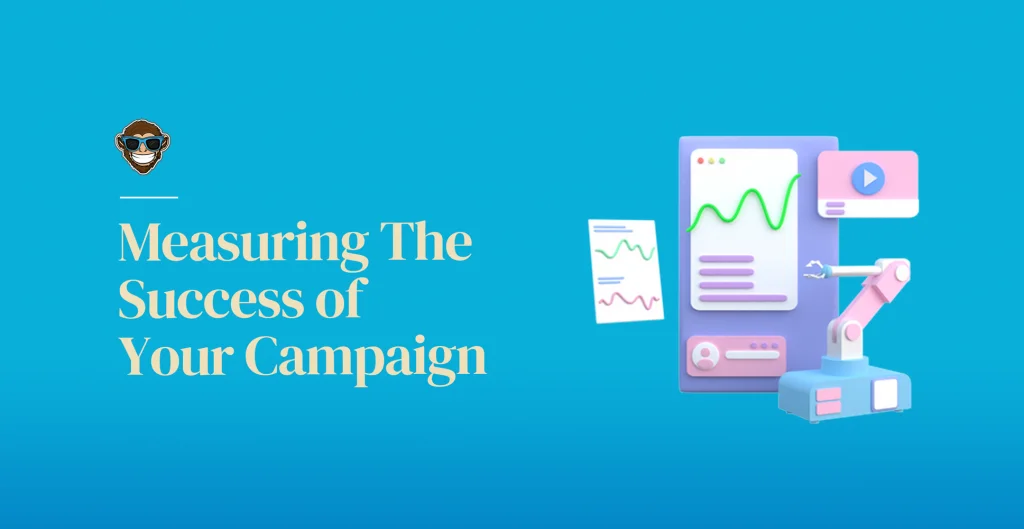Building a great, robust app is just the beginning of your mobile product’s journey. An integral part of creating a successful app is creating an effective marketing strategy to maximize your product’s reach and ensure its adoption.
Imagine you have a brand new restaurant, and you’re finally opening it down the street from your home. After countless working days and sleepless nights, your dream has come true, and your restaurant opens up its doors early in the morning…without telling a soul. All you have done to promote your new eatery is open its doors, which have a hanging sign that reads: “Now open!”. Sure, you’ve hired the best chef, the most friendly waiters, you’ve purchased top-of-the-line cooking equipment and avant-garde furniture, the shiniest cutlery, and the most expensive china you could find. You’ve also made sure your chef bakes the most mouth-watering pastries every morning and the most succulent ravioli every night. And yet, days go by without you seeing an increase in sales or the endless lines of hungry customers you were planning on serving every day. What you thought would be a smashing success is shaping up to be a catastrophic failure. But why? A marketing strategy. Or lack of it.
It may seem evident that, in the example above, you could have definitely taken a more wholesome, practical approach to market your new restaurant. Yet, as silly as it may seem, you’d be surprised how many business owners make the mistake of overlooking the importance of having an effective marketing strategy in place, and app development are no different. As a matter of fact, research has shown that out of 10,000 apps published in app stores, only one is successful. Furthermore, the same study concluded that the main reason for app failure, with 42%, is a lack of research about the market’s needs. So, however feature-rich and sophisticated your app is, if you’re not taking the necessary steps to research your target audience and advertise for it, your app is doomed. After all, how will your users download your app if they don’t know it exists or what it can do for them? Furthermore, you’ve invested a lot of time and resources into your mobile product; the last thing you want to do is throw all that effort away by ruining your marketing efforts.
We at Foonkie created this article to give you an idea of why creating a marketing strategy for your app is crucial and how you can do it to ensure your users are aware of your app and its benefits so you can drive your product’s long-term success forward. Of course, you can always hire an agency to handle the marketing strategy for you. However, this isn’t always affordable, so here’s our guide to help you do it independently.

What is Mobile An App Marketing Strategy?
As of December 2020, over 4.3 million apps were available in the App Store and over 2.9 million in Google Play Store. These numbers have undoubtedly grown in these past few months, becoming increasingly staggering and growing at alarming rates daily. So, if you think you can sit around waiting for your users to migrate to your app magically, you’ll be waiting for a very long time. As you can see, currently, competition in the mobile arena is fierce. That’s why it’s essential to stand out and have a marketing strategy in place to ensure app user acquisition before launching your product. This last point is crucial. Do not wait until you’ve launched your app to start figuring out how to promote it. Once you launch it, your marketing strategy comes into effect, so make sure you and your team have built it in advance.
But what exactly is mobile app marketing? Simply put, mobile app marketing refers to the strategies and marketing campaigns you develop to promote your app and communicate with your users to increase downloads and retention. Ideally, your marketing strategy takes place at every stage of the user’s life cycle: from when they first see an ad for your app to when they download it and become regular users. At first glance, it may seem like your marketing strategy’s final goal is to advertise for your app and get it out in the world. While this statement is partly true, ultimately, the primary purpose of a robust mobile app marketing strategy is to acquire and retain users that will not become loyal advocates for your product. Hence, effectively marketing your mobile app involves:
- Defining your target audience.
- Learning everything about them.
- Analyzing their in-app and online behavior to communicate with them efficiently.
- Understanding your competitors and how they function.
For this process to take place successfully, you must have an in-depth knowledge of your users. For this reason, from the initial stages of your development process, you must identify the key players in your specific app category, the problems your app will solve, map your app’s user journeys, and target paint points along the way. It doesn’t matter how sophisticated your app is or how thorough your marketing strategy is–if your app doesn’t address your users’ problems and needs, it will dive head-first into oblivion.
As you may have concluded by now, some basic concepts of mobile app marketing are similar to marketing approaches for any other kind of business, and you’re not wrong. However, mobile app marketing involves amalgamating traditional marketing concepts and knowledge of current smartphone trends to create a wholesome marketing campaign encompassing all relevant aspects of the mobile app ecosystem. You need to understand how to target and exploit the mobile marketplace and use the proper marketing techniques to get mobile app users to use and advocate for your app. Let’s find out how to do that.

Leverage Your Website
According to research, mobile websites are the primary source of app installs. So, if you have an existing, fully functional, mobile-friendly website, you have a great asset already set in place for promoting your app. Not only is this the easiest way to draw attention to your app and promote it, but it also conveys trust and tells your users that your brand new app aligns with an existing brand experience. Furthermore, you’re entirely in charge of how the promotion goes, when and where it’s placed, and the amount of space it takes, as opposed to paying for ad space on a third-party website where you’re limited to the owner’s rules. Finally, including your app in your website means that you can section off a whole part of your site exclusively for the promotion of your app. You can use a corner of the home page, the middle of the web page, or even use a pop-up page with the option to download it instantly, so the app’s information is the first thing your viewers see. Whichever option suits you best, at one point or another, all of your customers, new or existing, will find their way to your website, and when they get there, it is paramount they become aware that you have an app.
This point only applies if your mobile app is a part of an online presence ecosystem where your brand has an established website running. However, you don’t have to completely miss out on the benefits of marketing your app by leveraging your online presence. For example, you can create a landing page for your app specifically designed to promote your mobile product. It can be simple and clearly describe your app’s most essential features and value proposition so that whoever sees it is enticed to click through and download your app. And, because this is the first contact between your app and your potential adopters, your product’s landing page must be to-the-point crystal clear about why your app is useful and what problem it solves. Remember, this may be your one and only chance to convince potential users to download it, and first impressions count the most!. So, no matter what other marketing efforts you’ve made, if your landing–or website promotion–isn’t spot-on, you’ve already lost half the race.
Additionally, want to know what the good part of website promotion is? You can create a video, infographic, landing, or ad and recycle that content infinite times by putting it in app stores, paid ads on other platforms, and even on your brand’s social media. This way, you save some precious bucks and increase your marketing effort’s reach. And, in addition to building some expectations around your app, having an online marketing strategy is also a very effective way of ensuring early search engine optimization (SEO), increasing the chances of your app showing up on search engines. Doesn’t that sound great? Website marketing truly is the gift that keeps on giving, so don’t overlook it when creating your app’s marketing strategy.

Social Media
A few years ago, it was ludicrous to consider social media platforms as relevant vehicles for any product’s marketing and advertising strategies. However, nowadays, social media channels have become cardinal in any brand’s sales endeavors. Facebook’s 2.80 billion monthly active users, Instagram’s 1 billion, and Linked In’s 722 million, to name a few, make social media a haven for startups and brand owners seeking advertising and marketing stages that ensure higher reach for their buck. But, before we get into the nitty-gritty of social media marketing for your app, let’s add some context. There are two ways to kick starts your marketing journey on social media:
Organic: Organic promotion on social media comes from simply having a presence in any available social media platforms, e.g., having a Facebook page or an Instagram profile. Growing these accounts, starting to follow people and other brands relevant to your target audience and industry, gaining followers, and creating content that your followers will respond to are failsafe ways of gaining notoriety and increasing your reach without spending one cent. However, don’t be overly promotional or “spammy” on your social media pages. Instead, try to connect with your followers–who, by the way, are all potential users–in purposeful ways by creating posts that speak to them and touch on subjects that they genuinely care about. Again, if you did your market research and mapped your user journeys, this step will be a breeze.
Paid: Research has shown that 78% of consumers in the US have discovered products to buy via Facebook. In comparison, 50% of Instagram users have visited a website to purchase an item after seeing an ad for it on the platform. So needless, to say, investing some capital in your app’s social media promotion is a great way to ensure reach, coverage, and user awareness of your brand. Granted, if you’re a startup, the bucks won’t come rushing it at once, but you will boost your discoverability and get more people aware of your app and what it can do for them.
Because of the broadness of their audiences, their skyrocketing increase in usage, and their ability to segment, social media platforms are very effective marketing and advertising platforms for mobile apps of all kinds. Moreover, since Facebook now owns Instagram, any marketing efforts you put into one are transported to the other. You have access to a business suit that covers both platforms, so you’ll have access to both, making it easy to monitor your promotions.
Nonetheless, regardless of if you decide to use organic or paid social media marketing, or a combination of both, your marketing efforts must be ongoing. Promoting your app sporadically or posting on your social media channels once every two weeks may lead to a spike in downloads when you publish your ad or make your post. However, if the efforts are not constant, the impact will eventually taper off, and you’ll have to start over again, creating an illusion of inconsistency among your target audience.
In a nutshell, having an ongoing social media marketing strategy for your app is a foolproof way to increase your product’s discoverability and steadily increase its downloads. And, depending on the approach that works best for your company, you can save some money by leveraging social media’s reach without investing too much in your advertising campaigns. Oh, and since posting on social media is free, you’ve got a valuable tool on your hands.

App Store Optimization (ASO)
As you probably already know, the app stores are one of the main gateways for your mobile product’s showcasing to the world. But the competition is fierce, and it’s not shaping up to ease up any time soon. For instance, Apple’s App Store has almost 2 million apps available for download, while Google has around 3 million on its proprietary store. Sounds like a promising market, huh? Of course, it is! However, simply getting your app approved by any app is not enough to drive your marketing endeavors. With that many apps competing for a spot on the top rankings, you must dedicate some time and effort to optimizing your product’s standing and visibility. Here’s where App Store Optimization (ASO) comes in. In layman’s terms, ASO is the SEO of the app world, and it is crucial to ensure discoverability in what is shaping up to become an oversaturated market.
Your ASO strategy involves optimizing your app’s app store page, so it ranks higher in search results and converts at a higher rate. Why is this important? Research shows that over 65% of iOS app downloads come directly from searches in the App Store. If 65% of mobile app users are searching for apps using the app store’s search engine, then your product must show up as high as possible, so it has increased visibility and a higher download chance. Good app store optimization relies on an array of factors, but the main ones you should focus on are your app’s title and your choice of keywords:
App Name/Title: Your app must have a high-search traffic keyword placed in the name or app title. Defining that keyword results from time spent exploring which keyword should be based on your user and market research. And, as your app begins to rank higher and gain more users and downloads, word of mouth will do its thing. For this reason, make sure you choose an app name that sticks around forever. Changing the title of your app once it has reached some success will make it difficult for word of mouth to spread.
Keywords: The second part of your ASO strategy to improve your search rankings is knowing your keywords. And once again, user research comes into play. You must know which keywords are relevant for your target audience and which ones they often use when searching for apps. Apple, for instance, lets you use 100 keywords, and you can use their Apple Search Ads tool for some in-depth keyword analysis should you need it.
Other factors that your ASO strategy encompasses are your app’s description, secondary app categories, app subtitle, ratings and reviews, and the total number of downloads. We’ll dig deeper into these points and more in another article dedicated solely to ASO. Yeah, that’s how important it is. For now, the point we want to get across is that app store optimization is a very effective way of promoting your app and attracting organic users without cost. It allows you to increase your app’s visibility within app stores and increase your app conversion rates. And once your app is ranked high for a specific keyword search, it will continue to rank for months, or even years, on end. This increased visibility will undoubtedly lead to more downloads and, hopefully, increased user loyalty.

Search Engine Optimization (SEO)
Isn’t SEO for websites? You’re probably asking yourself why we include SEO in our list if we stated above that ASO is the SEO of the mobile app world. While that statement is true, the fact remains that SEO can’t and should never be replaced by ASO. SEO is still, and probably always will be, a crucial tool for mobile apps to gain visibility. Why? Because we live in an increasingly mobile world, most web traffic now comes from mobile devices. More importantly, Google now directs all searches to mobile-friendly sites first and makes suggestions that match relevant mobile apps with related search terms.
In addition, Google’s mobile-first 2013 search update made some algorithm modifications that ensure that apps optimized for mobile searches are prioritized and have the chance to rank higher. The relevance of SEO is further highlighted by research from Google that shows that one in four app users discover apps using Google search.
So, if we’ve managed to convince you of the importance of SEO for your app’s marketing strategy, here are some points to consider:
Keywords: Just as with ASO, keywords are the cornerstone of your SEO strategy. Make sure your keywords are relevant to your target audience. Do competition analysis and a rundown of the volume of your chosen keywords to select the ones that will give you more chances of organic traffic. The best part? These keywords will also be helpful for your ASO strategy.
Optimize your app’s name, title, and URL: Use relevant keywords in your app’s name, title, and URL. Just as we stated above, your app’s name should contain a keyword and clearly highlight what your app is about. Although not an easy endeavor, using keywords in your product’s name, title, and URL will help search engines find your app quickly and rank it higher.
App Indexing: App indexing enables you to set up your app’s URL so it can show up on Google search results along with other web results. This means that Google crawls and indexes your app just like it does with web pages allowing your product to reach a broader audience. This audience can be searching for products or services that relate to what your app offers and will see a download button, encouraging them to take action and try out your app.
Ratings and reviews: User ratings and reviews not only help you build credibility but are crucial to improving your product’s rankings on Google and the app stores. Google will determine your app’s search ranking depending on whether it is trustworthy or not and relies on your ratings and reviews to do it.
Optimize your app’s landing page: If you decide to create a landing page for your app, make sure to use keywords in titles, headings, subheadings, and throughout the entire page. Additionally, write an SEO-optimized meta description for the page and include images with alt tags that contain the keyword.
Want to know the best thing about SEO? You can use it along with your ASO strategy so that your app can rank better in both app stores and search engines. These strategies work together to ensure your mobile product has the visibility and discoverability that it needs to guarantee high adoption rates. And without spending big bucks! Also, keep in mind that you risk missing out on large portions of your target market if you only use one of these strategies.

Measuring The Success of Your Campaign
After building your app’s marketing strategy and launching it, you’ll need to track its success to gauge whether or not you’re investing the right resources in the right places. The best way to do this is to identify the goals you want to attain and determine how you will measure them. You must define these metrics before you launch your marketing plan and be monitored throughout the entire process to pinpoint flaws and address them adequately to avoid losses. For example, one of your goals can be increasing the number of users who keep your app for at least six months after installing it. You would measure this number by tracking how many users download your app after being shown your ad and how many of those users remain active after the determined period of time.
Lastly, make sure that, whatever your goals are, you can measure them. Setting unattainable or unmeasurable goals will confuse you and will be counterproductive to track if your marketing campaign is actually performing as it’s supposed to.

Final Thoughts
There’s no denying it: building an app for your business opens a whole new highway by which you can interact with your users and gain new ones. Similarly, an app can be a haven where your customers always have access to your brand’s services and benefits in one simple click or with the swipe of a finger. In terms of convenience and loyalty, these benefits brought by apps are unparalleled to any other business unit or asset your brand has. However, even if you put all your eggs in your app’s basket, lagging on creating a robust marketing and promotion strategy will render your app useless. If your users don’t know your app exists, if they know it exists but don’t know what it does, or if they are aware of it but don’t see the point of it, then they will not be interested in downloading it, and all efforts go down the drain. So remember, build a robust marketing and ad strategy to complement the time and money you invested in building your app from scratch. Make sure you understand your target audience, their needs, and issues, and try to convey how your app will make their lives better in the most effective and empathic way. Do that, and you’ll have a sure success in your hands.
If you’re having problems with your app’s marketing strategy, have questions about this article, or want us to work with you on your next project, don’t hesitate to contact us! We’ve been in the business of apps for over ten years. So trust us, we know what we’re doing!
